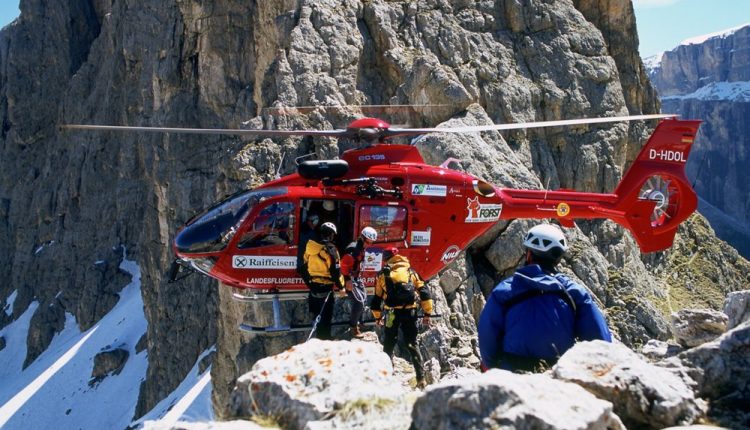
Prehospital trauma: accident on the winch - what happens next?
Dr Alan Garner recently published a report about a catastrophe that happened during a winching operation. He highlights the physiological challenges rescuers sometimes add in the work they do.
Prehospital trauma: a case report. Rescuers involved in a patient‘s death during a winching incident in Victoria in 2013 were very much distressed. Victorian Coroner’s Office asked Dr Garner to provide an expert opinion on the death based on some previous research he had conducted with Dave Murphy, on of their registrars, looking at the effects on respiratory function of various methods of HEMS rescue.
Prehospital trauma during a winching operation: the case report
The case is about a man of approximately 60 years of age and BMI of 45 with borderline cardiac failure injured his ankle whilst on a hunting trip in Victoria about a kilometre from the nearest road.
Carrying him was considered risky for the rescuers (the terrain was steep) and a hoist extrication by helicopter was organised. An accompanying single sling technique was utilised.
Unfortunately, as they approached the aircraft skid the patient became combative and then unconscious. He slipped from the strop despite the best efforts of the paramedic and crewman and fell to his death. I can only imagine the distress of the crew when this occurred.
The actions of the crew on the day were consistent with their company/Ambulance Victoria procedures and were within the specifications of the equipment utilised. They were just doing their best to provide their best care as they’d been trained. Neither was any of the equipment found to be faulty. The obvious question then is why did the fall happen?
Winching operation: what happens when you put someone in that hoist?
You need to go looking in the climbing literature to find the physiological effects of suspension with chest compression which is what happens when you are in a single strop. As you would expect, there is a constrictive effect upon respiration but there is also a considerable decrease in cardiac output resulting from the decreased venous return with raised intrathoracic pressure.
The decrease in cardiac output has been demonstrated to be as much as a third in fit young climbers. The decrease in respiratory function parameters is similar (in both the Murphy paper and the one referenced in the link in the previous sentence).
Given that the chest compression associated with hoist rescue is of short duration it is generally adequately tolerated long enough to complete the rescue to fit young people.
The effects of single strop rescue in people who have been immersed even where they are otherwise fit and young is perhaps better known and the second sling under the knees (or hypostrop as it is often called) is in widespread use in this situation. For winches of non-immersed persons, it seems that the physiological consequences of various rescue techniques are not well known in the industry, however.
Subsequent actions by Ambulance Victoria, the helicopter operator, the Victorian Coroner, CASA and the Australian Transportation Safety Bureau (ATSB) all rightly concentrated on determining how a repeat of the incident could be avoided by better educating both clinical and operational crews about the physiological implications of hoisting techniques.
Prehospital trauma: what are the options?
Should the single strop technique be banned entirely? We don’t believe so. Every rescue is a balance of risks and sometimes the risk to either the patient, aircraft or both means that an immediate single sling extrication may be the safest option overall. Knowing about the physiological downsides we have discouraged its use for many years and encouraged the use of the rescue basket. We have not removed it from the armamentarium, however. If a crew elect to use it they have to provide a report in writing to the chief pilot about why they chose that technique.
Hoisting is risky for lots of reasons. We train for a range of safety considerations. And equally, we have to make sure we’re aware of the physiological changes we might inflict on our all-important patients.
Respiratory function in hoist rescue: comparing slings, stretcher, and rescue basket
Loss of Consciousness During Single Sling Helicopter Hoist Rescue Resulting in a Fatal Fall



